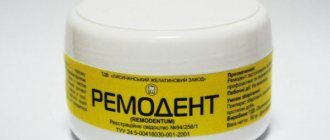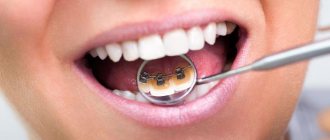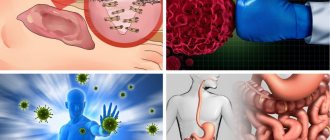- What is xylitol
- What is xylitol made from?
- Properties of xylitol
- Benefits of xylitol
- Benefits of xylitol for children and teenagers
- Where is xylitol used?
Sugar is one of the most dangerous foods for dental health. However, you cannot completely give up sugar. Firstly, it is useful for memory, vision and the normal functioning of all organs and systems. And secondly, sugar is contained in one degree or another in all foods (even low-fat yogurt, vegetables and herbs). If it is difficult for you to limit your consumption of sweets, it is best to use its healthy analogues - for example, xylitol.
What is xylitol
Xylitol (or xylitol) is a natural sugar substitute with properties beneficial for teeth and gums. It has no side effects like regular sugar or artificial sugar substitutes. When replacing sugar with xylitol, it stabilizes insulin levels and improves overall health. Natural xylitol reminds us all of sugar - it is white, has a crystalline structure and a sweet taste. The body is able to produce from 5 to 15 g of xylitol on its own by breaking down carbohydrates. That is, for us xylitol is a natural, not alien element.
Is the component harmful and is it allowed during pregnancy?
The xylitol contained in toothpaste is not harmful to the human body if the instructions in the instructions are followed. The negative impact of this substance is possible only if there is an individual intolerance to the component and/or if the permissible standards of use are exceeded. In addition, xylitol has a weak laxative effect (at high concentrations when taken orally).
A pregnant woman must follow all oral hygiene recommendations given by the dentist. The expectant mother needs to brush her teeth twice a day with a brush of weak or normal hardness. You can use both an electric toothbrush and a regular one.
If necessary, the doctor will prescribe medicated pastes containing xylitol, intended for cleaning teeth in an interesting position. Pregnancy is not a contraindication for the use of such products. However, the expectant mother needs to regularly visit the dentist (2-3 times during the entire period of gestation) for a preventive examination and professional cleaning.
It is strictly not recommended to use products containing xylitol if:
- hypersensitivity to the compound in question;
- epilepsy;
- in children up to three years of age.
The content of xylitol, like any other substance included in toothpaste, can be found from the information on the packaging and/or tube.
Benefits of xylitol
- Prevents the growth of bacteria
and reduces the risk of caries. - Normalizes the acid-base balance
, strengthening the enamel. - Has an antifungal effect
. Oral infection Candida albicans feeds on glucose, and when it is replaced with xylitol, it gradually goes away. - It has a positive effect on the gums
, reducing the amount of plaque on them and reducing the risk of inflammation of periodontal tissue. - Retains water
on the surface of the gums, moisturizing and softening them. - Increases salivation
and improves the protective properties of saliva. - Has minimal effect
on sugar and insulin levels. - 40% less calories
than sugar.
Oral microflora: microbial digestion
The effectiveness of sweeteners in the prevention of caries can be examined using the example of the behavior of microorganisms in the human oral cavity. Consider the microbial decomposition of sucrose: it leads to the production of significant amounts of lactic, formic, acetic and propionic acids. Sorbitol and mannitol reduce the breakdown of substances by oral bacteria and reduce the production of lactic acid, while xylitol is not broken down at all or to a minimal extent by the bacterial microflora of saliva and dental plaque.
Obviously, xylitol is simply not food for oral microorganisms, and when xylitol is microbially degraded, it does not provoke the production of lactic acid. Moreover: regular consumption of xylitol not only prevents further acid production, but also contributes to the formation of a population of streptococci with significantly reduced cariogenic activity. Thus, xylitol significantly reduces the production of lactic acid after ingestion of glucose in dental plaque in children with high cariogenic activity. In this study, patients were given 5 g of xylitol daily in the form of chewing gum. After 14 days of consumption of xylitol-containing chewing gum (daily dose of 10.9 g of xylitol), a sharp increase in biofilm pH was positively observed, while the pH of patients consuming sorbitol-containing gum at a similar amount showed a sharp drop in pH. Therefore, the cariogenicity of a confectionery product can be determined by its acidity level through telemetric pH measurement on a living object. Confectionery products that lower the pH level to at least 5.7 within 30 minutes are entitled to the “Teeth-friendly” label in Germany. This labeling helps consumers navigate grocery stores well.
Sweeteners for weight loss
It's no secret that the amount of sugar we consume is directly related to our weight. According to research conducted by scientists, in order to achieve tangible results in losing weight, you need to reduce the amount of sugar in your diet. Conversely, in order to gain weight, you should consume more sugar. Nowadays, the problem of excess weight is relevant for a large number of people. Statistics say that every third person on Earth suffers from excess weight. That is why in the modern world so much attention is paid to sweeteners. The demand for them is growing every year.
Study of caries
Clinical studies presented in this section have shown that chewing gum sweetened with xylitol significantly reduces the risk of developing dental caries. At the same time, repeated use of this chewing gum is an obligatory component of the daily diet. The control group who did not consume it had a 30-60% higher risk of developing caries. The starting point for research on xylitol from a dental perspective was research at the University of Turku conducted more than 30 years ago.
Turku, Finland:
The first controlled study at the University of Turku looked at the effects of using sweeteners in food and chewing gum. At the same time, almost all the sugar contained in the food was replaced by xylitol or fructose.
Compared to the control group that ate regular sugar-containing foods, participants in the 100% Xylitol group showed a significant reduction in cariogenic processes: within 2 years they slowed down by 85%.
When additional parameters of this study were included, specifically looking at the nature of the biofilm, patients in the 100% Xylitol group showed a 50% reduction in plaque compared to the sucrose and fructose group.
Some time after this study, based on the complete replacement of sucrose, an additional experiment followed where sucrose was only partially replaced by xylitol over the course of a year. This experiment also showed that replacing sugar is an effective preventive measure. Compared to patients who consumed sugar-containing chewing gum, the second group experienced a significant (approx. 65%) reduction in caries processes.
After the University of Turku published research on the preventive potential of xylitol, the sweetener attracted widespread interest. Further clinical studies outlined the main goal - to study in more detail the effect of xylitol on the colonization of bacteria in the oral cavity, the ecology of plaque and the development of caries. Thus, the following conclusions were published:
Ylivieska, Finland:
In a study conducted in Finnish schools among 11-12 year old children, chewing gum was considered as an addition to an existing prevention program (fluoridation, fluoride varnish, oral hygiene advice).
In the control group, which consumed xylitol-containing chewing gum three times a day, a significant reduction in caries processes by 55-60% was achieved. As a result of prevention, the teeth that erupted in children during the trial period were the most resistant to caries.
Children at high risk for tooth decay also showed the greatest benefit from consuming xylitol-containing chewing gum. Against the backdrop of well-developed dental care in schools, the results of using xylitol chewing gum were truly impressive. Subsequent studies also showed that long-term effects were achieved when using this chewing gum in the fight against tooth decay. Even five years later, children who consumed xylitol had fewer caries lesions compared to children in the other control group. The long-term effect was especially noticeable in the teeth that erupted in children during the prophylactic period.
Belize, Central America:
This study primarily examined the direct differences between xylitol and sorbitol chewing gum. The duration of the experiment was limited to 40 months. It was carried out in conditions of extremely high sugar intake, high caries activity and limited dental care.
In children who consumed xylitol-containing chewing gum, caries appeared significantly less frequently after the end of the study than in the group with sorbitol-containing chewing gum. The results obtained support the view that xylitol is not only a non-cariogenic sugar substitute, but also promotes the remineralization of primary enamel lesions. This study also documented the long-term effects of consuming xylitol-containing chewing gum. Five years after the end of the experiment, children continued to experience fewer caries in their molars.
Estonia:
Unlike chewing gum, tablets or candies do not pose disposal problems. Also, chewing gum is not recommended, for example, when wearing fixed orthodontic appliances and other treatment options. The studies compared the preventive effect of xylitol-containing tablets and chewing gum. In schools, teachers gave children chewing gum or candy every day. Thus, children consumed xylitol-containing foods on approximately 200 days a year during school.
After a trial period of 2 to 3 years, it was found that taking xylitol tablets 3 times a day (daily dose - 5 g) has an effect similar to that of chewing gum. This study shows that it is not chewing xylitol-containing gum that has an effect on oral health, but xylitol itself.
Transmission of Streptococcus mutans from mother to child
Recently, there have been increasing reports of another promising effect of xylitol-containing chewing gum. Streptococcus mutans is the most cariogenic group of bacteria in the oral cavity.
In newborns, colonies of Streptococcus mutans are initially absent. Thus, colonization of the oral cavity mainly occurs through the transmission of bacteria from mother to child during the eruption of primary teeth. This period is also called the Streptococcus mutans infection window.
There is currently debate about the extent to which xylitol has an inhibitory effect on mother-to-child transmission of microorganisms. Based on the hypothesis that prevention of Streptococcus mutans infection is associated with the prevention of child caries, studies using chlorhexidine have revealed the benefits of its use as an alternative.
A recent study examined the effect of xylitol on mother-to-child transmission of bacteria. Mothers began regularly using xylitol-containing chewing gum starting three months after giving birth until their children reached two years of age. Two groups of mothers were given either chlorhexidine or treated with fluoride varnish, and the second group received xylitol. Children did not receive any special treatment or preventive measures in either the experimental or control groups. At the end of the trial, xylitol was found to be much better at preventing transmission and therefore colonization of Streptococcus mutans in the infant's mouth. Also, during control examinations after 3 and 6 years, it was recorded that under the influence of xylitol, microbial colonization and cariogenic processes in children are significantly lower.
The authors of the study justify the effective effects of xylitol mainly by the fact that when it is consumed, the content of Streptococcus mutans in the oral cavity is significantly reduced. This certainly interesting effect of xylitol was confirmed in further studies. Consequently, there is a prospect of changing the paradigm of caries prevention by creating less cariogenic conditions in the child’s oral cavity.
Forecasts
In terms of application, chewing gum has been proven to be a suitable prophylactic agent.
The cost-effectiveness of this solution is noteworthy as it delivers the benefits through intense chewing activity without the addition of other active ingredients. Chewing stimulates salivation and thus changes the composition of saliva, making it anti-cariogenic. With the polarization of caries (fewer children and adolescents are at high risk of developing caries), chewing gum can significantly help people who have a high risk of developing caries and are interested in better compliance with preventive measures. Chewing gum can be the first step to improving your oral hygiene.
Recent studies have shown that xylitol in tablets and candies has the same preventive effect as in chewing gum. Confirmation of this position in further research will refute the thesis that the decisive factor is the use of chewing gum, and not xylitol. Combining chewing gum with sugar substitutes is a promising step towards further improving oral health. Many studies have revealed important advantages of the pentavalent sugar alcohol xylitol over other sweeteners. However, the use of xylitol-containing chewing gum cannot completely replace regular brushing of teeth with toothpastes containing fluoride. However, chewing gum sweetened with xylitol can make a good contribution to protecting dental health in children, adolescents and adults.
Remineralization
Remineralization of carious changes that begin in tooth enamel is a natural cariesstatic process. Thanks to the content of calcium, phosphates and fluorides, saliva has a remineralizing effect on tooth enamel. However, this is a rather slow process. The remineralizing effect is also attributed to xylitol, but the mechanism of its action is not fully understood. An important study of remineralization under the influence of xylitol was conducted in Belize, where hardening of demineralization foci was observed in 10-27% of caries pathologies.
Summarizing
Thus, with the help of xylitol-containing chewing gum, the effect of caries prevention can be achieved. Chewing gum should be consumed several times a day for a long time. In most studies, chewing gum is used 3-5 times a day, the daily dose of xylitol is about 5g. Research recommends sticking to this diet.
According to recent studies of the introduction of chewing gum into kindergarten preventive programs, this intervention to improve oral health receives a high level of acceptance by parents and staff. In addition, children were also enthusiastic about chewing gum.
When comparing the effects of xylitol- and sorbitol-containing chewing gum on the elimination of Streptococcus mutans in the oral cavity, it was found that in this six-month experiment, xylitol-containing gum showed better results. When using xylitol-containing chewing gum, the effect depends on the concentration of xylitol and its purity. It is believed that for antimicrobial effects it is enough to take 5 g daily, but 100% xylitol. Chewing gums containing mixtures of xylitol, sorbitol and other additives usually contain very small amounts of xylitol.
Thus, meeting the daily requirement can only be achieved by using chewing gum sweetened exclusively with xylitol. The minimum dose of xylitol for an effective effect has not been determined. Additionally, the studies do not indicate how many doses of xylitol are required to achieve long-term changes in oral microflora.









